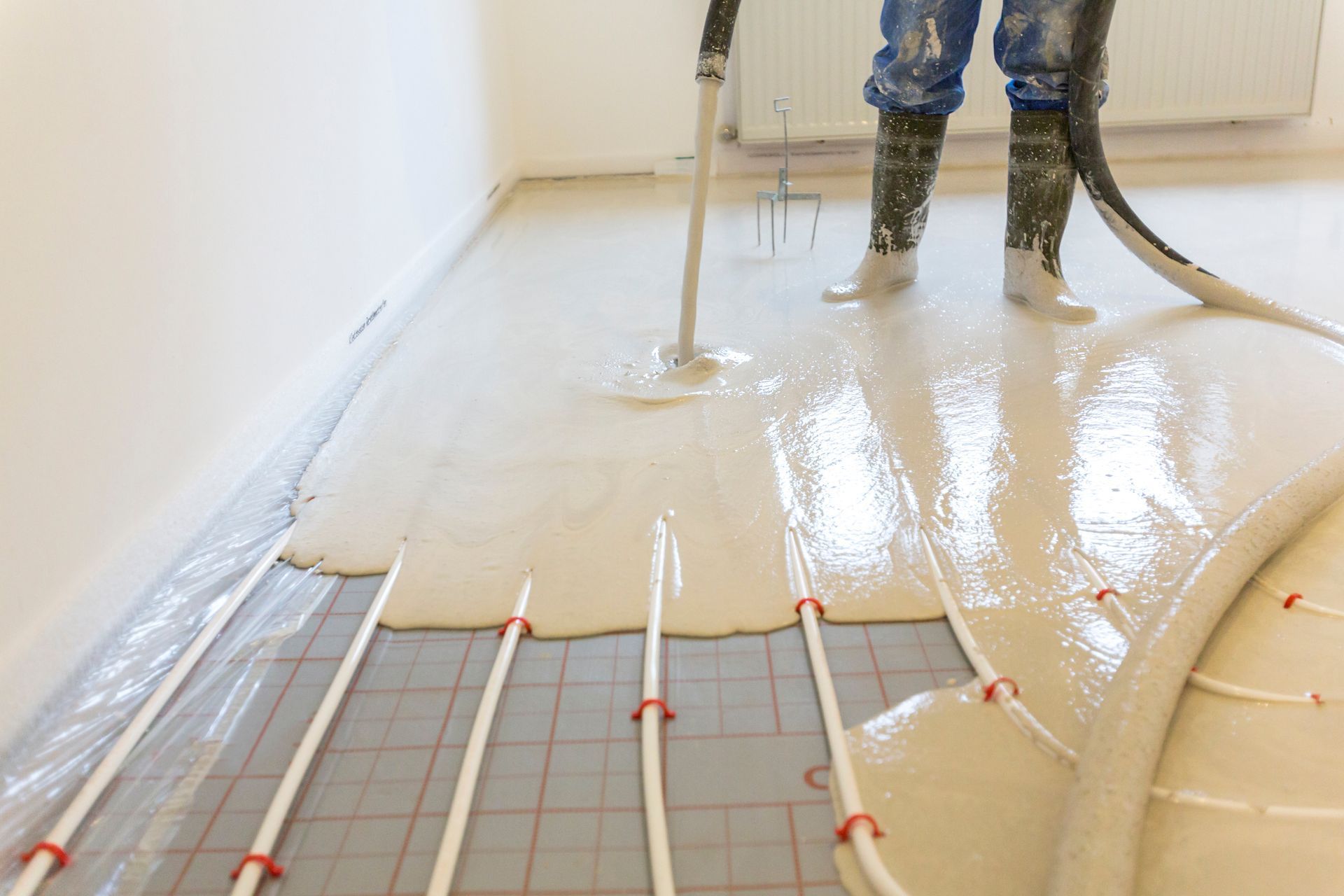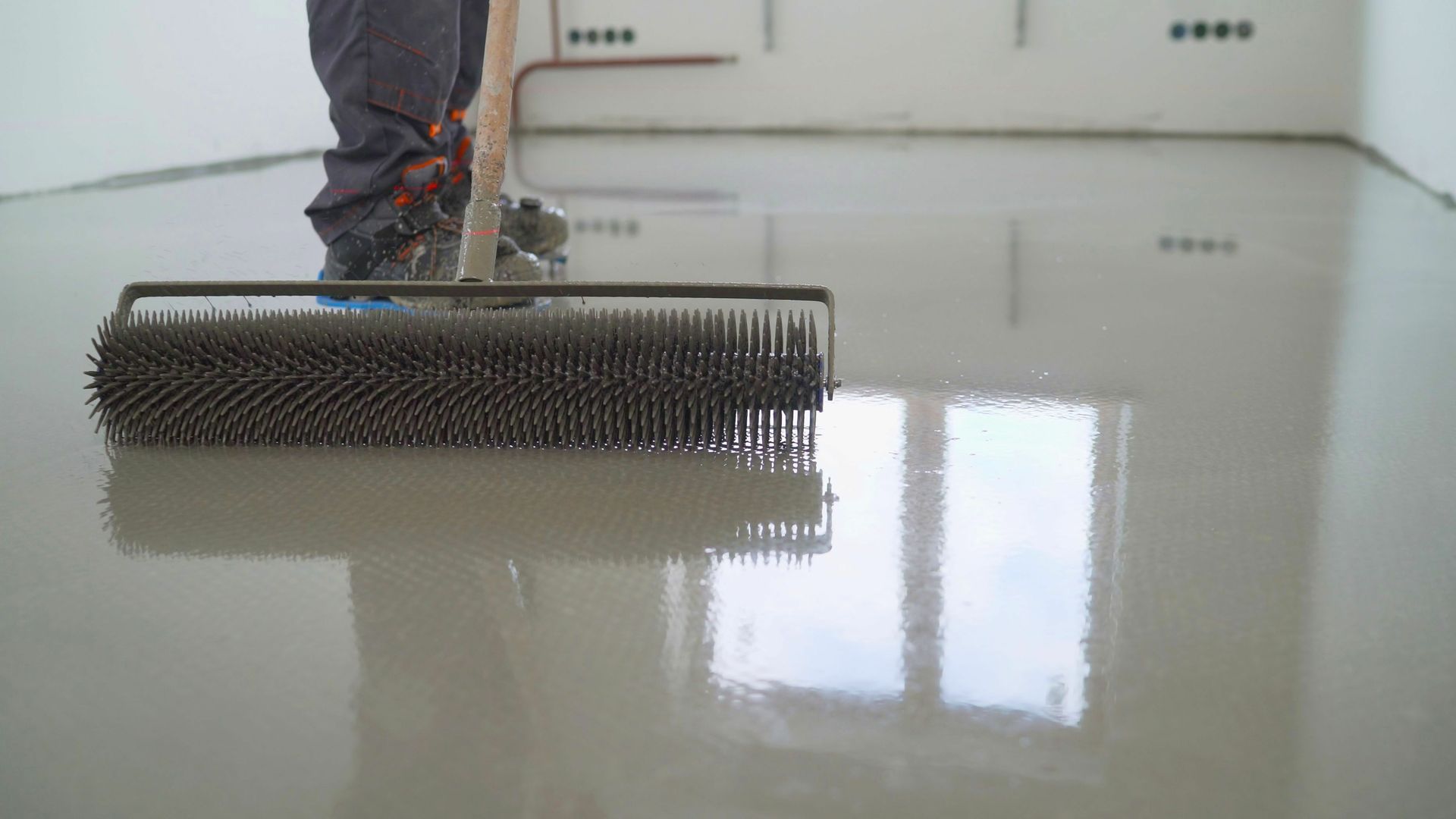How to screed a floor?
Clockwork Screed is a team of experts with many years of experience in producing and installing liquid screed for a wide range of construction and refurbishment projects.
Here we provide some guidance on liquid floor screed, starting with how to screed a floor.
Get a Liquid Screed Quote Today!
To screed a floor you should firstly remove any debris. If laying insulation, this should be applied next. Then lay a watertight membrane, at least 1000 gauge, to avoid any leakages. If there is an underfloor heating system, secure the pipes to stop them floating.
You are now ready to pour the liquid screed as long as the room temperature is between 30°C and 5°C. Work backwards from the section furthest away from the entrance so that you are at the doorway when finished. Once the screed is laid, you need to close the room off for around 72 hours to allow it to dry.
We would mention at this point that laying liquid floor screed is a skill that is learned over time and the above, brief instructions don’t include the many details that can affect a successful screed floor installation. We would always advocate using a professional liquid floor screed firm like Clockwork Screed to supply and install your liquid floor screed.
What is the purpose of a floor screed?
A floor screed creates a smooth, level floor ready for the application of a final floor finish such as carpet, tiles, laminate and vinyl. Liquid floor screed is used with underfloor heating systems as it enhances their performance.
Screed floor types: liquid floor and poured insulation
Clockwork Screed supply both liquid floor screed and poured insulation. Poured insulation is a quicker and less labour intensive alternative to insulation boards.
Combined, poured insulation and liquid floor screed create a floating screed. The poured insulation is applied directly on top of the floor base, and the floor screed is laid on top of the poured insulation, ready for a final floor finish.
Liquid floor screed - key benefits
• Strong and durable
• Can be laid as thinly as 25mm
• Offers exceptional thermal conductivity when used with underfloor heating systems
• Durable and shrinkage resistant
• Dries quickly – within 24 – 48 hours
• Quick to install
Poured insulation - key benefits
- Ultra-low weight (as low as 93kg/m³) so ideal for underfloor heating systems
- Environmentally friendly due to its low cement composition and therefore reduced CO² emissions during production and installation
- Fast drying, as little as 1cm per day
- Quick to install
- Less labour required than PIR (Polyisocyanurate) insulation boards
- Less waste than insulation boards
Perfect for underfloor heating
Liquid floor screed and poured insulation are perfect for underfloor heating applications. Their lightweight, thermal and acoustic benefits remove the need for insulation boards, and provide thermal conductivity that enhances the performance of the underfloor heating system.
Because liquid floor screed and poured insulation self-compact, there is no risk of bubbles or voids around the pipework. Both dry very quickly, allowing the rest of the project to be completed without delays.

Choose Clockwork Screed for your next project
Get in touch with the Clockwork Screed team for a chat about liquid floor screed and poured insulation for your project.
FAQs
What happens to liquid floor screed waste?
We only batch-produce the amount of liquid floor screed you need, so there is no waste.
What surfaces can poured insulation be applied to?
We can apply our poured insulation to hardcore, concrete and beam and block surfaces.
Do you supply liquid floor screed and poured insulation for both domestic and commercial projects?
Yes








